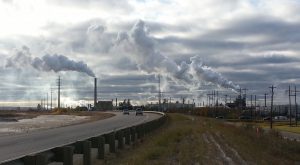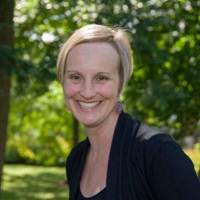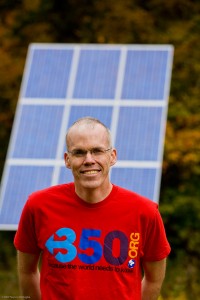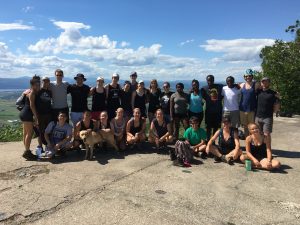This week we have discussed multiple cultural views of place, and how recognizing those views can help us care for places, and in turn, work towards positive social and environmental change. Students of the Understanding Place class should post a comment here reflecting on the importance of cultural lenses in their understanding of that place.
Category: Uncategorized
Sustainability Practicum Essay 4
In a later chapter in his book Flourishing, John Ehrenfeld says that the question of whether one is optimistic or pessimistic about the future is the wrong question. The right question about the future, he says, is, “Are you hopeful?” Why might that be an important question to ask if you are thinking about engaging with issues of sustainability as a young adult?
And what is your personal response to that question? Are you hopeful? If so, why? From what source or feeling do you manufacture your hope? And if not, what motivates you to pursue an educational path that includes an emphasis on a study of the environment even though you are not hopeful for the future? The best answers will be ones that draw specific information or support from the readings, interviews, and/or case studies we have engaged with throughout our time in the SoE this year, including our week in Washington, DC, with Planet Forward.
Post your essay as a comment to the relevant post of the MSoE’s blog, The Stream, by Friday, July 28th, by 5:00 pm.
Understanding Place Week 3: Non-Human Others and Relational Shaping of Place
This week we have examined several lenses and perspectives helping to make visible (or audible, or tactile…) the influences of non-human others in shaping places. These lenses have included acoustic ecology, highlighting the importance of attending to biophony, geophony, and anthrophony in shaping a multi-species inclusive sense of place, as well as kincentric ecology, a specific cultural lens into traditional foodways. Students in Understanding Place should comment here, reflecting on the influences of non-human others on their chosen places. Don’t forget to also upload your comment through the appropriate link on Canvas.
Understanding Place Week 2: Spatial Scales and Local-Global Connections
This week we have thought about how observing and experiencing place through different spatial scales can help us care for places, and in turn, work towards positive social and environmental change. Students of the Understanding Place class should post a comment here reflecting on the importance of spatial scales in their understanding of that place.
Understanding Place Week 1: Temporal Scales
This week we have thought about how observing and experiencing place through different time scales can help us care for places, and in turn, work towards positive social and environmental change. Students of the Understanding Place class should post a comment here, each briefly describing a chosen place that they know well, and then reflecting on the importance of temporal scales in their understanding of that place.
SoE Summer 2017, here we come!
The SoE is off to a great start! Twenty-four students have arrived and are already delving deep into their classes with returning faculty; participating in workshops on communication styles and teaming; and having lunch with practitioners like Middlebury’s president, Laurie Patton. We took a great hike up Snake Mountain and are looking forward to the exciting, integrative weeks to come.
Seeking Beauty, and Expressing Struggle
Today’s post comes from Joan Grossman, filmmaker and producer, who most of you know as one of the key faculty members of the Middlebury School of the Environment:
As a documentary filmmaker, traveling for work is often the most authentic way to experience a place, if not the most pleasurable. Sometimes, as filmmakers we may be seeking beauty, but often we’re looking for something else that expresses the strange, unexpected struggles that underly our survival on this planet. This last year I traveled across the continent, from New York to Alaska, on a series of trips, as the American producer on an Austrian film about a Russian woman in New York, trying to walk home, heading for the Bering Strait.* The film is an unusual hybrid of unscripted fiction and documentary, and was inspired by a true story from the 1920s. Our version is contemporary and takes much poetic license. Along with being a story about a lone woman on an epic, existential journey, it is also a story that slices through North America at this particular juncture in time. We were not making an “environmental” film per se, but we were working in some extraordinary places that also happen to be environmental flashpoints.

One of the most striking places we filmed at was the encampment at the Standing Rock Sioux Reservation in North Dakota, where Native Americans and their allies are resisting the Dakota Access Pipeline, slated to carry oil across the Missouri River just north of the reservation.The river is the main source of drinking water for the reservation and millions more downstream. It had been deemed too risky for the pipeline to cross the river at the state capital, Bismarck, 40 miles north, where the population is largely white.
The encampment had established a site where ceremony, music and organizing were taking place all day and into the night, along with an ad hoc infrastructure to care for and feed hundreds – soon to be thousands – of people every day. We were at Standing Rock in August, just as it was becoming a big international story. Among other things, we filmed statements by tribal leaders as they arrived in a steady stream of support, bringing together the largest number of tribes ever. For Native American cultures, respect for the natural environment is a guiding principle, and that was a powerful message to hear over and over again. I became acutely aware of how Standing Rock was tying together the crucial issues of our times – racial injustice, climate change, and the influence of corporate interests on our politics and economy.
Native American reservations are some of the poorest communities in the United States. Pine Ridge Reservation in South Dakota, which encompasses parts of the Badlands, where we also filmed, has a per capita income under $4,000 per year, and 60 percent of the people do not have electricity and running water. Life expectancy is the second lowest in the Western hemisphere, after Haiti. While these statistics are bleak, the gathering at Standing Rock has energized an indigenous environmental justice movement that is gaining global support, although they clearly have a big hurdle ahead with the Trump administration determined to go forward with the pipeline.
Later, in Canada, we went to Fort MacMurray in Northern Alberta, to film at the tar sands, or oil sands, as they are referred to locally. Last year, Fort MacMurray was engulfed in a devastating wildfire that was fueled by a hotter, drier climate. The fires spread dangerously close to the oil sands operations and shut everything down. As we approached Fort MacMurray we drove through miles of burnt trees that stretched as far as the eye could see. The oil sands region in Alberta has one of the largest oil deposits in the world. It is also one of the dirtiest energy sites anywhere. The extraction of oil from the thick mixture of bitumen-covered sand requires enormous inputs of natural gas and chemicals. The controversial Keystone XL Pipeline was built to carry the synthetic crude that is produced in the oil sands, and while the pipeline was halted by an opposition movement, it is now also getting revived under the Trump administration. The area is one of the most dystopian places I have ever seen. Driving north of Fort MacMurray toward the mining operations, we were hit by a pungent, acrid smell among massive installations that produce a level of emissions so high they can create their own weather system. We experienced a strange artificial snowfall there.
We ended the production in Anchorage, Alaska, where we intended to film wintery scenes. It was November, when snow and ice can be expected. But snowfall has diminished considerably in recent years. With climate change, Alaska and the Arctic are warming at a faster rate than other parts of the world. The first few days we were there it was warm and sunny. The sunshine turned to drenching rains, and we filmed our character walking through heavy, foggy rainfall, which could have been almost anywhere.
This last year was an interesting time to be crossing the country, particularly as the only American among a European film crew, partly seeing it through their eyes. The election was on everyone’s mind and we had many conversations with people along the way, whose politics we disagreed with, but with whom I sometimes found a surprising amount of common ground. Chances are I wouldn’t have had these kinds of encounters if I the work hadn’t taken me to places I might otherwise never had visited – such as former coal towns in Pennsylvania, or the prairies of rural Nebraska. In any case, I was reminded of how big the country is, and how little we talk to each other outside of our like-minded bubbles.
The project still has a long editing process ahead with almost 200 hours of material. It’s an enigmatic story; no one knows for sure if the original character made it back to Russia in the 1920s. In the film, too, there are more questions than answers. Stay tuned.
* The film, Lillian, is directed by Andreas Horvath, and will be completed sometime in 2018.
Carbon neutrality at Middlebury College!
All MSoE alumni are aware that Middlebury College set for itself a goal of becoming carbon neutral by the end of 2016. The campus sustainability and renewable energy tours we include in the curriculum emphasize the initiatives that we launched in pursuit of that goal.
And you are all probably aware that we officially reached that goal with the certification of the carbon sequestration on our land that is now guaranteed through the creation of a permanent conservation easement on Bread Loaf land in the Green Mountains.
This is a big achievement, and there are so many narratives related to leadership and environmental engagement wrapped up in this overall story that it’s hard to know where to begin. First of all, the goal itself was the product of a student group who not only dreamed it up but conceived the college trustees to adopt the vision based on an equal mix of passion and a compelling plan for accomplishment. Never doubt that you — as individuals or as a small group — can bring about change.
Each step along the way, described quite well in a recent article written by Nathaniel Wiener for our friends at Planet Forward, was its own massive undertaking, involving technology (the biomass plant), educational outreach (energy efficiency), creative ideation on energy diversification and resiliency (solar and biomethane energy infrastructure), and land conservation and law (carbon sequestration on permanently conserved forestland). Each is a story all on its own (which I hope to describe in the future), but taken together indicates that large goals can be achieved through the combination of several smaller steps.
Now that carbon neutrality has been achieved here, the obvious question is “What comes next?” Carbon negativity? Local food systems engagement? Fossil fuel divestment? Zero fossil fuel use? The possibilities are great. And for any one of them, we know from experience that there is a path forward to success.
Fundraising as a leadership skill
In my role as a professor of biology at Middlebury College, one of the classes I teach each spring semester is Conservation Biology. I teach the course not only through the lens of how the principles of ecology and genetics can be applied to conserving life on Earth, but also through the lens of how conservation is practiced out in the real world. Many of my students want to become conservation practitioners, working for government agencies or environmental NGOs, and as practitioners they need to be fluent not only in the knowledge base that informs our thinking about what we should do but also in the skill set in how to do it.
Over the years, as I explored what that ideal skill set ought to look like, I continually asked the conservation leaders I worked with — agency heads, executive directors, entrepreneurs, activists — what skills they found most critical to being successful in there jobs.
When I began this informal survey, I was expecting them to tell me about special technical skills like GIS, remote sensing, plant identification, animal tagging, DNA barcoding, and the like. The kind of skills that we try to incorporate into our traditional academic majors. What I found was the exact opposite.
Without exception, the skills that were named were these:
- Raising money.
- Managing money.
- Managing people.
In retrospect, it makes perfect sense. Success emerges from the effective operation of a system, whether that system is an organization, volunteer initiative, business plan, or political campaign. And such systems require money and people.
This understanding informs much of how the Middlebury School of the Environment approaches the issue of environmental leadership, and in particular, why it includes “fundraising” as one of its eight important leadership skills. Some people are naturally gifted (or naturally un-self-conscious) at asking others for money to support their good idea. However, for a variety of reasons, many of us have an aversion to asking for financial support: embarrassment, shyness, a sense that money itself is a “bad” thing. The list goes on.
The good news is that this aversion is complete unnecessary. Fundraising need not be viewed as something that must be done against our wills, and thus as a negative. Rather, it can be viewed as a positive, a way to help others with financial resources to support achieving their own goals and desires.
 This is the foundation for the Fundraising workshop offered in the MSoE. Taught by Sue Kavanagh, we guide students through the steps for a positivist view of fundraising. With over 25 years of fundraising experience, Sue currently serves as director of principal gifts at Middlebury College, where she is responsible for providing direction and support for the cultivation, solicitation, and stewardship of Middlebury’s highest-level potential donors. With most of her career in higher education, Sue’s work has focused primarily on individual fundraising. Her practice spans two comprehensive capital campaigns at Middlebury and before that at Paul Smith’s College in the heart of the Adirondacks when that institution was developing its first environmental programs. Sue started working in political advocacy and fundraising in New York State’s capital following completion of her BA in communication at the State University of New York at Geneseo.
This is the foundation for the Fundraising workshop offered in the MSoE. Taught by Sue Kavanagh, we guide students through the steps for a positivist view of fundraising. With over 25 years of fundraising experience, Sue currently serves as director of principal gifts at Middlebury College, where she is responsible for providing direction and support for the cultivation, solicitation, and stewardship of Middlebury’s highest-level potential donors. With most of her career in higher education, Sue’s work has focused primarily on individual fundraising. Her practice spans two comprehensive capital campaigns at Middlebury and before that at Paul Smith’s College in the heart of the Adirondacks when that institution was developing its first environmental programs. Sue started working in political advocacy and fundraising in New York State’s capital following completion of her BA in communication at the State University of New York at Geneseo.
With Sue’s guidance, students in the MSoE will comes away with greater confidence that they can successfully attract financial support to launch their ideas that will make the world a better place!
Bill McKibben returns to talk about leadership
 We’re excited to share that noted author and environmentalist Bill McKibben will join us once again as a Fellow of the Middlebury School of the Environment in 2016. Bill has worked tirelessly – and successfully – on behalf of the environment for decades. His 1989 book The End of Nature is regarded as the first and most influential book for a general audience about climate change, and has appeared in 24 languages. He is founder of 350.org, the first planet-wide, grassroots climate change movement. The Schumann Distinguished Scholar in Environmental Studies at Middlebury College and a fellow of the American Academy of Arts and Sciences, he was the 2013 winner of the Gandhi Prize and the Thomas Merton Prize, and holds honorary degrees from 18 colleges and universities; Foreign Policy named him to their inaugural list of the world’s 100 most important global thinkers, and the Boston Globe said he was “probably America’s most important environmentalist.” A former staff writer for the New Yorker, he writes frequently a wide variety of publications around the world, including the New York Review of Books, National Geographic, and Rolling Stone.
We’re excited to share that noted author and environmentalist Bill McKibben will join us once again as a Fellow of the Middlebury School of the Environment in 2016. Bill has worked tirelessly – and successfully – on behalf of the environment for decades. His 1989 book The End of Nature is regarded as the first and most influential book for a general audience about climate change, and has appeared in 24 languages. He is founder of 350.org, the first planet-wide, grassroots climate change movement. The Schumann Distinguished Scholar in Environmental Studies at Middlebury College and a fellow of the American Academy of Arts and Sciences, he was the 2013 winner of the Gandhi Prize and the Thomas Merton Prize, and holds honorary degrees from 18 colleges and universities; Foreign Policy named him to their inaugural list of the world’s 100 most important global thinkers, and the Boston Globe said he was “probably America’s most important environmentalist.” A former staff writer for the New Yorker, he writes frequently a wide variety of publications around the world, including the New York Review of Books, National Geographic, and Rolling Stone.
Once again, Bill will bring to the students at the School of the Environment his expertise as a practitioner in organizational strategy and creative ideation. We are pleased and excited that he is joining us again, and I know that students who attend the School this coming summer will profit in many ways from his experience and commitment.
